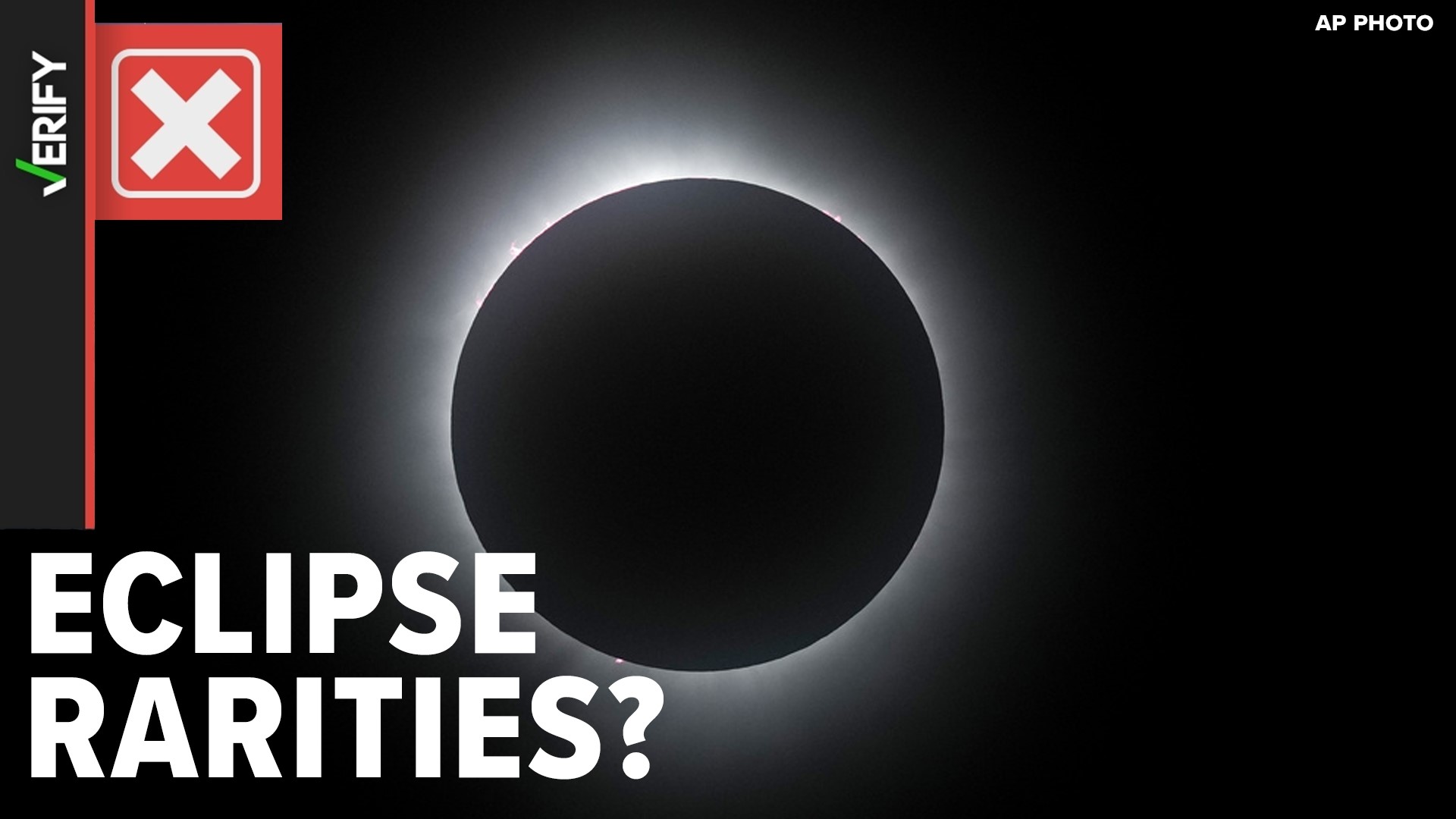HUNTSVILLE, Ala. — The most recent solar eclipse to occur, April 8, 2024, has had mixed responses as to if solar eclipses are a rare occurrence or not. Some say it's a 'once in a lifetime' experience and while that may be true for some, solar eclipses occur more than we think.
THE QUESTION:
Are solar eclipses a rare occasion?
SOURCES:
- NASA
- NOAA
THE ANSWER:
No, solar eclipses aren't a rare event that takes place. In fact, since there are four types of solar eclipses, they occur about every 18 months.
It's important to first distinguish the differences in a solar eclipse and a lunar eclipse, plus the different types of solar eclipses.
Let's define just exactly what an eclipse is. An eclipse, per NASA, is "an awe-inspiring celestial event that drastically changes the appearance of the two biggest objects we see in our sky: our Sun and Moon. On Earth, people can experience solar and lunar eclipses when Earth, the Moon, and the Sun line up."
As mentioned above from NASA, people can experience solar and lunar eclipses. So, what is the difference between the two? A solar eclipse occurs when the Moon passes in between the Earth and the Sun, therefore obscuring the Sun where as a lunar eclipse occurs when the Moon moves into Earth's shadow, causing the Moon to become darkened.
Believe it or not, the differences dive in even further when it comes to solar eclipses. What was just experienced for some back on April 8, 2024 (areas within the path of totality), a total solar eclipse, happens when the Moon passes between the Sun and Earth, completely blocking the face of the Sun. People located in the center of the Moon’s shadow when it hits Earth will experience a total eclipse. The sky will darken, as if it were dawn or dusk.
The rest of us that day experienced what is called a partial solar eclipse which happens when the Moon passes between the Sun and Earth but the Sun, Moon, and Earth are not perfectly lined up. Only a part of the Sun will appear to be covered, giving it a crescent shape. During a total or annular solar eclipse, people outside the area covered by the Moon’s inner shadow see a partial solar eclipse.
We also have what is called an annular solar eclipse. An annular solar eclipse happens when the Moon passes between the Sun and Earth, but when it is at or near its farthest point from Earth. Because the Moon is farther away from Earth, it appears smaller than the Sun and does not completely cover the Sun. The latest annular solar eclipse occurred back on October 14, 2023.
Finally, the last type of solar eclipse is called a hybrid solar eclipse. Occasionally, during its journey across the globe, the Moon's shadow can transition between an annular and total eclipse because of the Earth's surface being curved.
While there may be some truth to the statement when it comes to a total solar eclipse, as only certain areas will be in the path of totality and the path changes each time of occurrence, solar eclipses as a whole are not a rare sight to see.
The next total solar eclipse to happen will be on August 12, 2026 for the Arctic, eastern Greenland, Iceland, and northern Spain areas.
Despite occurring approximately twice a year worldwide, the next total solar eclipse anticipated in the United States won't happen until March 30, 2033, visible from northwestern Alaska. Subsequently, another is expected to traverse parts of Canada, Montana, and the Dakotas on Aug. 23, 2044. However, it won’t be until Aug. 12, 2045, when one will span the contiguous United States from California to Florida.
You can view a list of the next solar and lunar eclipse occurrences here.

